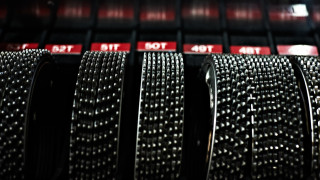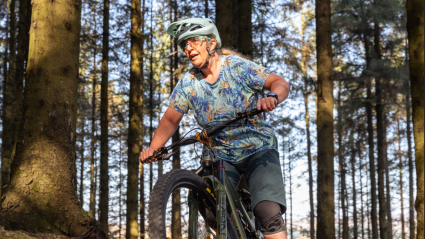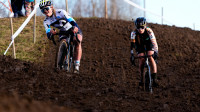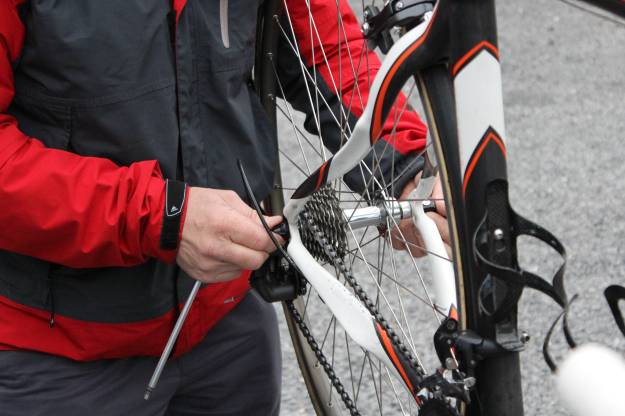Gears let you tackle the steepest climbs and efficiently roll on the flat, find out how they work in this article.
Shifters
Up until the early 1990’s, gear shift levers were normally located on the downtube of the bike and relied on friction and a fair amount of rider skill and feel to select the appropriate gear. Now shifters are incorporated into the brake hoods on road bikes and trigger style systems on mountain bikes and hybrids and use a ratchet mechanism that controls cable tension and means that one click shifts one gear.
Cassette
The cluster of sprockets on your rear wheel is known as a cassette. Depending on the type and age of your bike, it will probably have between 9 and 12 sprockets and will be referred to as 8-speed or 12-speed respectively. On a typical road bike, the smallest sprocket will typically have 11(11t) or 12 (12t) teeth and the largest 25 (25t) to 32 (32t) teeth.
Chainrings
Attached to your cranks are your chainrings. Most road bikes will have a double chainring set-up. Chainring sizes vary but a standard road set-up will typically have 53 teeth (53t) on the outer large chainring and 39 teeth (39t) on the smaller inner one. Compact gearing, with 50t on the outer and 34t on the inner, has become very popular for tackling hilly sportives and has largely superseded triple three chainring cranksets. An in-between “Pro or Semi-Compact” 52t outer and 36t inner are also fairly common.
Gear Ratios
If you are in your larger 50t chainring and your smallest 12t sprocket, what does this mean? This 50:12 gear ratio means that every turn of your pedals is multiplied by the gear to make your wheel rotate just over four times (50÷12=4.2). This gear is your “biggest gear”, it is the hardest to push but for each pedal rotation it will give you the greatest distance.
When you hit a hill, you will need to shift down to a lower or easier gear. On really steep slopes or if your legs are really tired, you might be in your lowest gear. This would be the smaller 34t chainring and the largest 28t sprocket. This 34:28 ratio would give you just over one rotation of your wheel for every pedal stroke (34÷28=1.2) and will hopefully get you up that tough hill.
Rear Mech
Your rear mech, also called a rear derailleur, shifts your chain between the sprockets on your cassette and is operated by your right hand shifter.
Front Mech
Your front mech or front derailleur, shifts your chain between your chainring and is operated by your left hand shifter. Most front mechs also allow you to slightly “trim” their position.
Cross Chaining
If you have your chain on the smaller chainring and smallest sprocket or larger chainring and largest sprocket, the angle of the chain will be fairly extreme. This is both inefficient and can result in premature component wear. With modern groupsets it is not such an issue as it used to be but should still be avoided where possible.
Single Chainrings
On mountain bikes, cyclo-cross and gravel bikes, single chainring set-ups have become increasing common. With wide range cassettes (10-50t), the range of gears match those of a double or even triple chainring set-up and this simpler approach appeals to many riders. Technologies such as clutch rear mechs and wide/narrow chainrings have also solved chain dropping issues that used to plague single chainring set-ups. The main disadvantage of single chainring set-ups are the relatively large jumps between sprockets on the cassette which can disrupt your cadence.
Indexing
When gears are well set-up and maintained they are said to be indexed and should shift crisply from one sprocket or chainring to the other without any noise, skipping or delay. Indexing gears is a relatively simple job that you should take the time to learn to do.
Electronic gears
Electronic gears use tiny electric motors to shift the derailleurs. This totally eliminates problems such as poor shifting due to cable stretch and gives lightening quick and crisp shifts and automatic trimming of the front mech. Electric groupsets are still relatively expensive but manufacturers are now producing 2nd and 3rd tier products, making then more affordable.
















